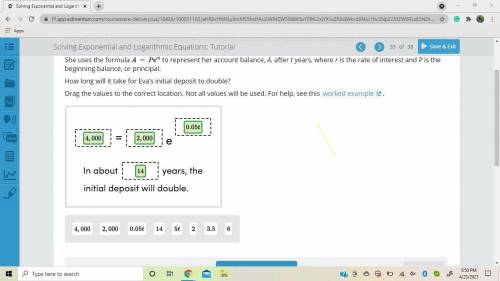
Mathematics, 28.06.2019 09:00 xojade
Iva deposits $2,000 into an interest-bearing savings account that is compounded continuously at an interest rate of 5%. she decides not to deposit or withdraw any money after the initial deposit. we can represent the account balance of the savings account after t years by an exponential function: a(t) = $2,000 ∙ e^0.05t. approximately how many years will it take for the initial deposit to double?

Answers: 1


Other questions on the subject: Mathematics


Mathematics, 21.06.2019 18:00, ykpwincess
Kayla has a $500 budget for the school party. she paid $150 for the decorations. food will cost $5.50 per student. what inequality represents the number of students, s, that can attend the party?
Answers: 1

You know the right answer?
Iva deposits $2,000 into an interest-bearing savings account that is compounded continuously at an i...
Questions in other subjects:


English, 15.01.2021 22:10



Mathematics, 15.01.2021 22:10


Social Studies, 15.01.2021 22:10



Biology, 15.01.2021 22:10




